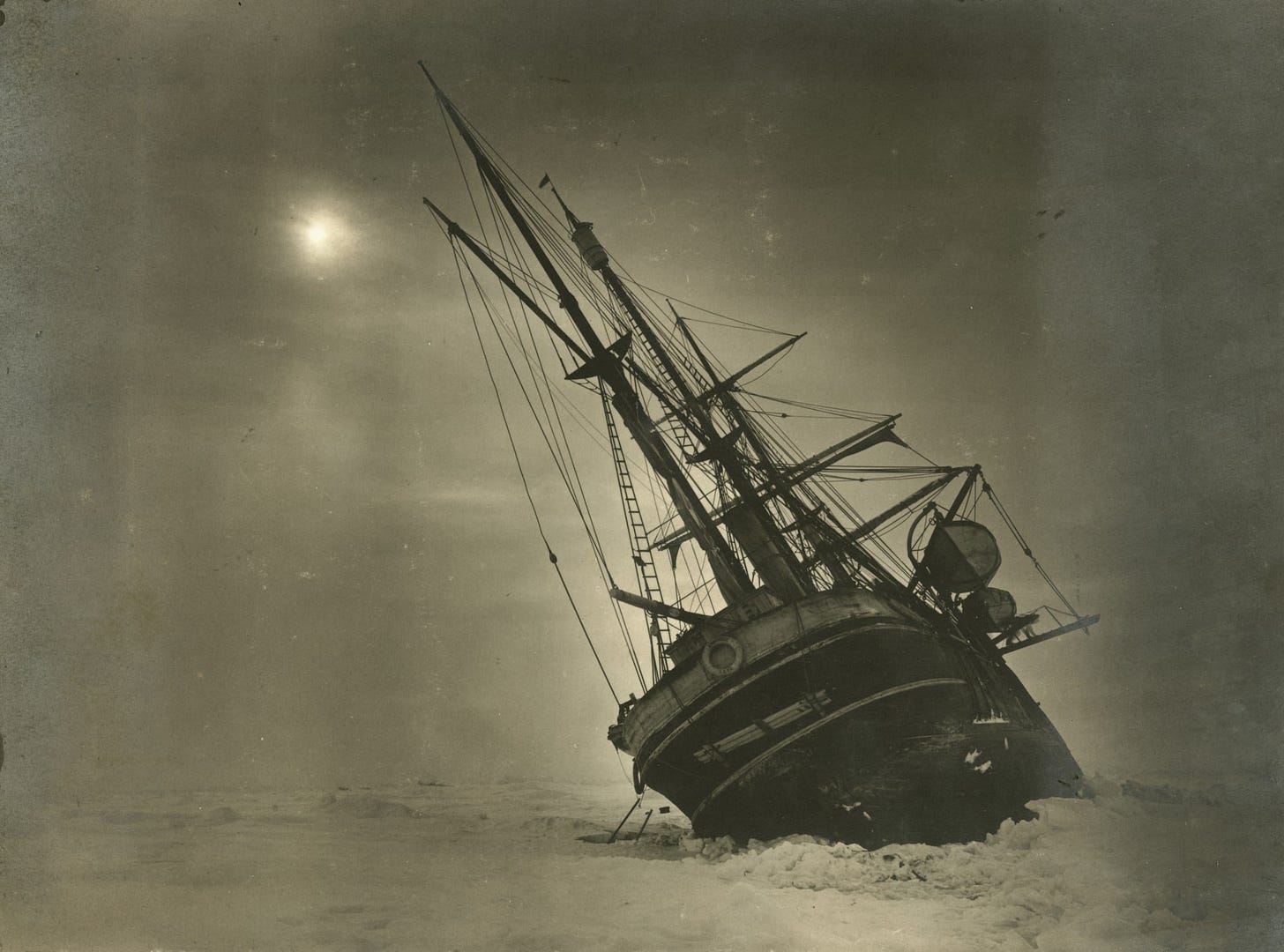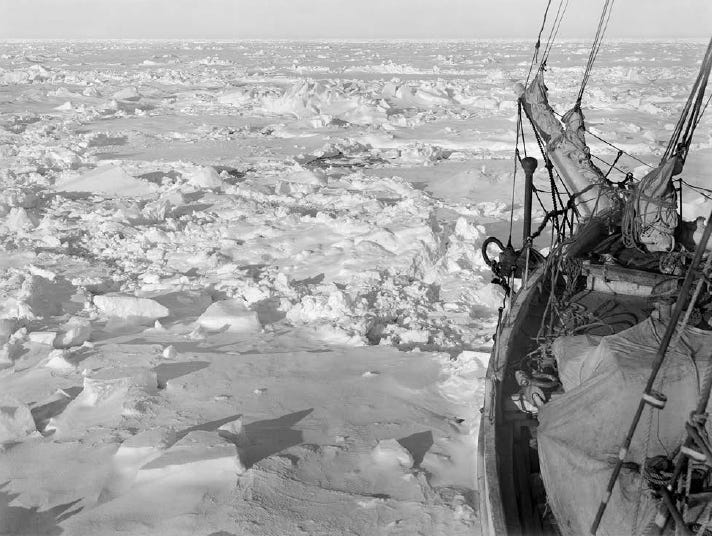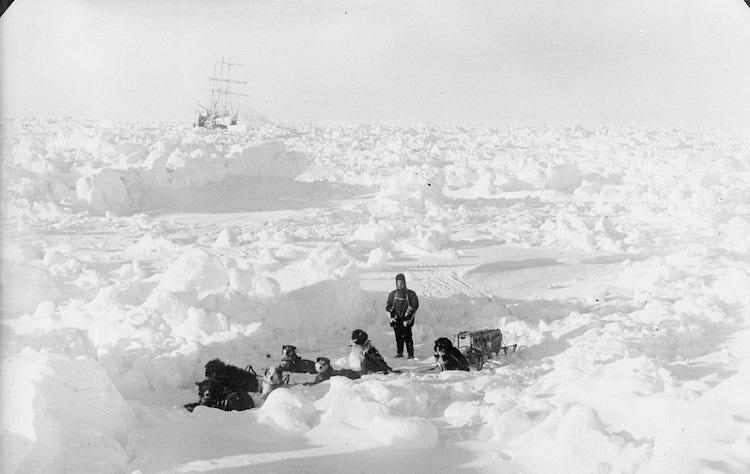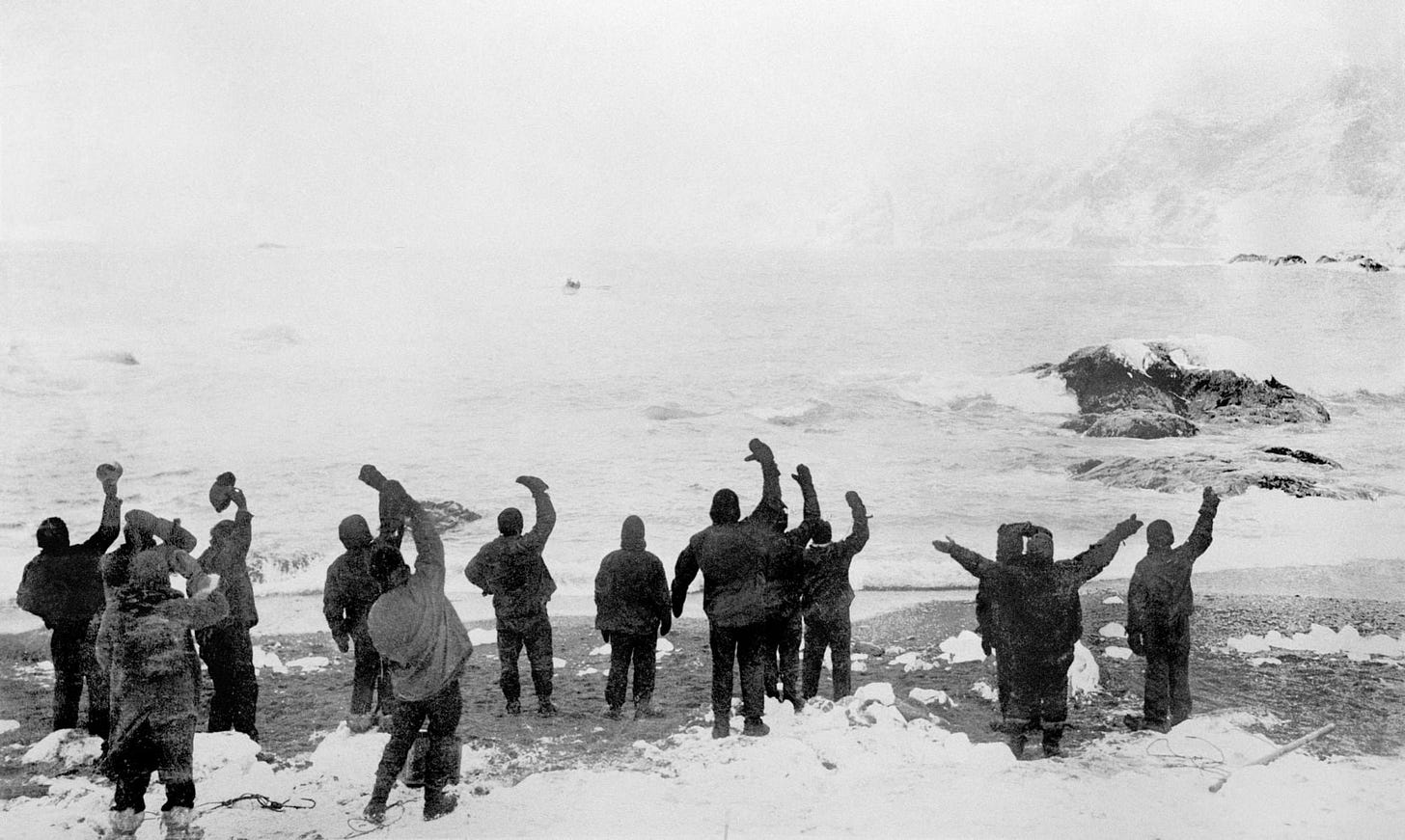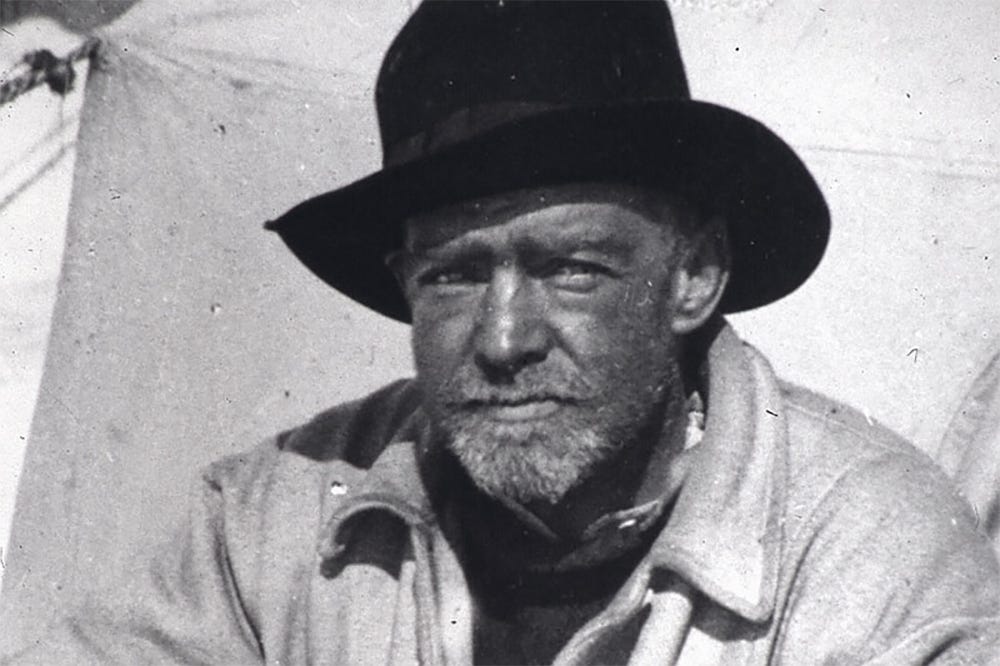The Will To Endure
An Unlikely Success Story Doubles as a Spiritual Guide in a Pinch
(Note - this is a re-stack, but with new revelations!)
Aren’t nautical tales just the best? They’re chock full of whimsy, tickle that deepest, most inherent sense of adventure, and—as vital ballast—they vividly detail some of the most terrifying living conditions on earth. I pulled on an internet thread, as one does, and landed on an article about an intrepid Aussie photographer named Frank Hurley. That article shared a link to the 1959 non-fiction book Endurance, by Alfred Lansing, which I ordered on the spot. As you’ll see, Hurley’s work is almost peerless in its wicked combo of technical precision and skilled storytelling, given the proximity to the dangerous conditions he worked around and the unbelievable fortitude it must have required to secure the wooden boxes full of heavy glass negatives throughout. (A number of them did sink with the ship, which was long ago rendered untouchable via treaty. The images that survived are beyond incredible, and I imagine it pains many a modern photographer and maritime historian to know that more are down there.)
The short:
In December of 1914, Sir Ernest Shackleton set sail from South Georgia Island on his new ship Endurance on an ambitious expedition to land on and trek across the entirety of Antarctica. Aboard were 27 men, including: Hurley, one wildly unlucky stowaway, and two packs of sled dogs. If successful, he would be the first to ever do so. What an absolute nutter.
The moderately longer:
A storm of explorative competition was building back in Europe. Several years before Shackleton began his extraordinarily hell-enduring journey, the Norwegian explorer Roald Amundsen had made it about halfway across the Antarctic continent before being forced to turn back, living to boast about it. I imagine this event burned Sir Ernest up pretty good, as he had also tried and failed to land there once before. This time, he was gonna do the Nord one better. And he succeeded…kind of.
The expedition never came close to making it across, let alone make it there. Shackleton’s legendary ship got hopelessly stuck in the outer pack ice of the Weddell Sea, hundreds of miles from land.
Then, after the better part of a year—an agonizing portion of that lived atop the ice pack in the complete darkness and sub-zero temperatures of Antarctic winter— the ship finally was crushed by the immense pressure and sank, leaving the men and 69 dogs to survive on the ice with just three small ship-boats and any remaining stores and gear they had been able to salvage before it succumbed. Months passed, and— believing the pack was not going to open again in time to escape with their lives—they attempted to drag those tons of boats and stores across the deep slush for miles in hopes of finding an open seam of ocean where they might be able to float clear of the pack before being crushed. The task was unbelievably difficult, and a worthy opportunity for escape never materialized, so the plan was abandoned. They were forced to wait it out where they were, fingers crossed.
Many more months went by. On the dregs of their stores, all dogs shot and eaten, the darkness of winter approaching, and with fear nipping greedily at their souls, they must have imagined the end was near. But then, one fine morning, the sun ascended into a rare, clear sky, illuminating a true once-in-a-lifetime opportunity: The ice had parted! Springing into action, Shackleton willed the crew into those three tiny boats and across a wide open antarctic channel, deftly navigating menacing ice floes, tumbling icebergs, monster swells, blizzards, frostbite, exhaustion, madness, starvation, darkness, and—one can only assume— terrible, horrible, no good bouts of hopelessness.
Their destination appeared: The tiny, uninhabited Elephant Island. A watchman had spotted it by chance on a rare clear day, many miles from their tenuous respite atop a wildly pitching and rapidly disintegrating ice floe. And so, after seven days of unimaginable suffering, all three boats landed on the island, only to find one very inhospitable rocky “beach”, with absolutely nothing to shield the crew from the unceasing elements. “What fine luck!” they must have hissed through gritted teeth. Those elements included tornado force wind gusts that sheared straight down the hundreds of feet of sheer black rock face encircling the island. But there was good news: alongside the mythical navigational skill of Endurance captain Frank Worsley, Shackleton hadn’t lost a single man to the formidable crossing. And arguably just as impressive: crew morale was still relatively high, and slivers of hope remained. But, there was little sustenance to be had, and they wouldn’t survive here for long, either.
Acknowledging this, Shackleton soon came to a harrowing decision. With a small crew of four men, he would sail the largest of the ship-boats, the James Caird, another 800 miles across one of the most treacherous open oceans in the world back to South Georgia, with the intent of locating a known whaling station there and bringing a ship back to rescue the remaining men. Should he survive the crossing, he’d then have to make a first ascent up and over an icy, unknown mountain range and then trek about 25-30 miles across to the port. I mean, can you even imagine? The rest of the men would fashion the two remaining boats into a tent shelter of sorts and wait, without wi-fi, hoping for a miracle.
The whole ordeal borders on the make-believe, and Lansing’s book itself enthralls like a fictional adventure novel. One of the rare works of non-fiction that had my heart racing well past my normal bedtime many nights, eyes burning, unable to close the book.
Not long after I finished, along came an intriguing epilogue: “At The Bottom of an Icy Sea, One of History’s Great Wrecks Is Found” (the article might be paywalled now, but message me if you’d like a gift link) There it was - E N D U R A N C E - now in high definition and vibrant color, just as the men had last seen it 109 years ago.
The way this historic story and recent discovery dovetails with modern life strikes me as important somehow, and at the very least, factually fascinating. When Shackleton first set sail, World War I was underway back in Europe. Years later, he would return home with one of the most epic and unlikely survival tales ever heard, just in time for the Spanish Flu to begin its own long reign of destruction. That the Endurance22 search began and ended while Russia invaded Ukraine and with the covid pandemic still raging can certainly be filed under “huh.”, if nothing else.
And even if that nothing else has little to do with world events, it has a fair amount to do with applicable life lessons. Such as: the evergreen value of faith, hope, preparation, and keeping one’s calm in a nearly hopeless situation. The timing of having read this book a few months before our own version of a nearly hopeless situation is peculiar, to say the least, and perhaps that’s part of why I felt called to revisit. Back then I aimed only to write a simple book review, but now… the timing of my read has taken on the feeling of an Uncanny Premonitory Event. But then, our minds are hardwired to seek connections and to search for truth, and with the benefit of hindsight many an incidental event can appear to have increased supernatural meaning. Coincidence? Perhaps. Or not.
If you haven’t read it, and happen to be on the hunt for a thrilling adventure read that also provides irrefutable proof of what the human spirit and body is truly capable of when it chases impossible dreams and refuses to give up when things go terribly wrong…I can’t recommend Endurance enough.


